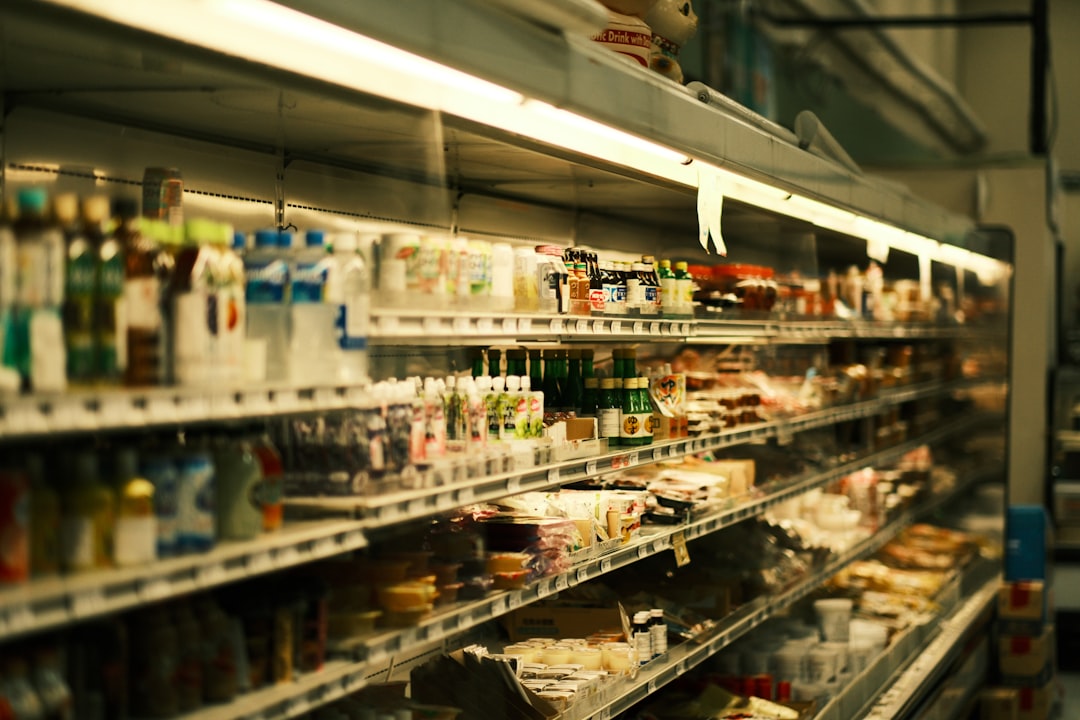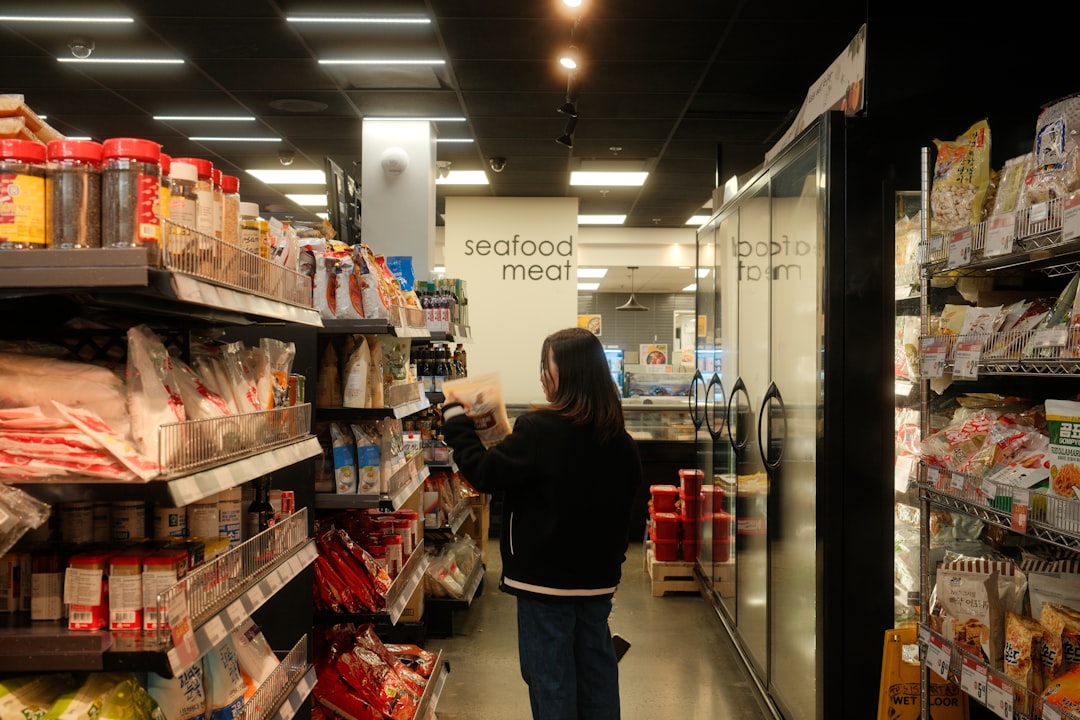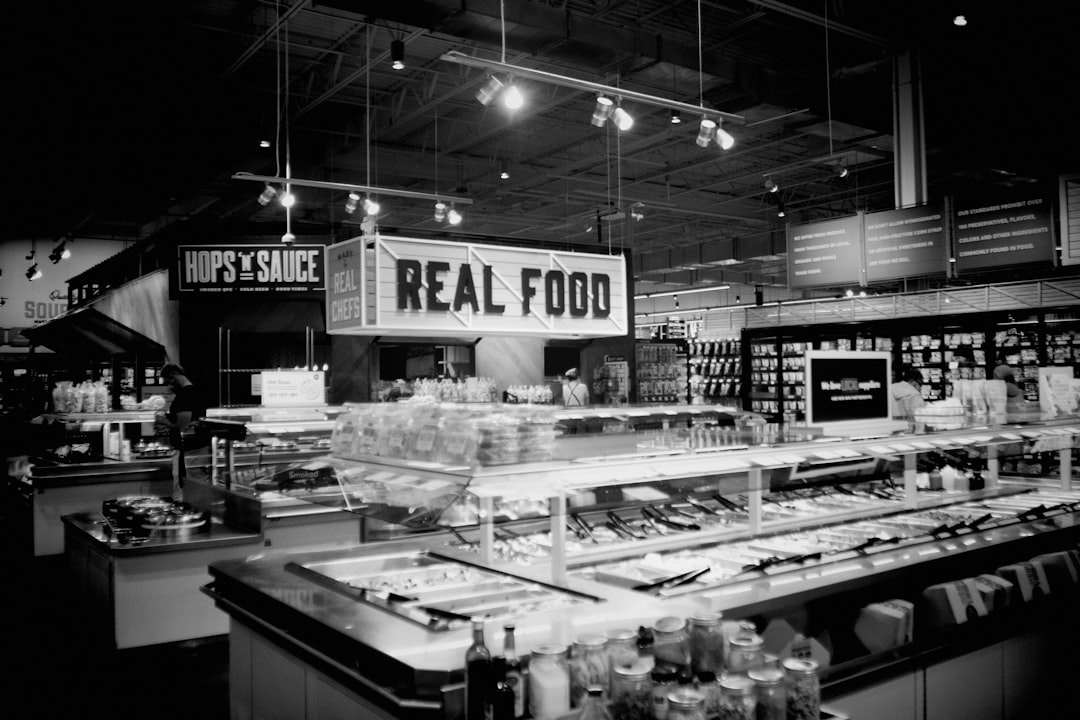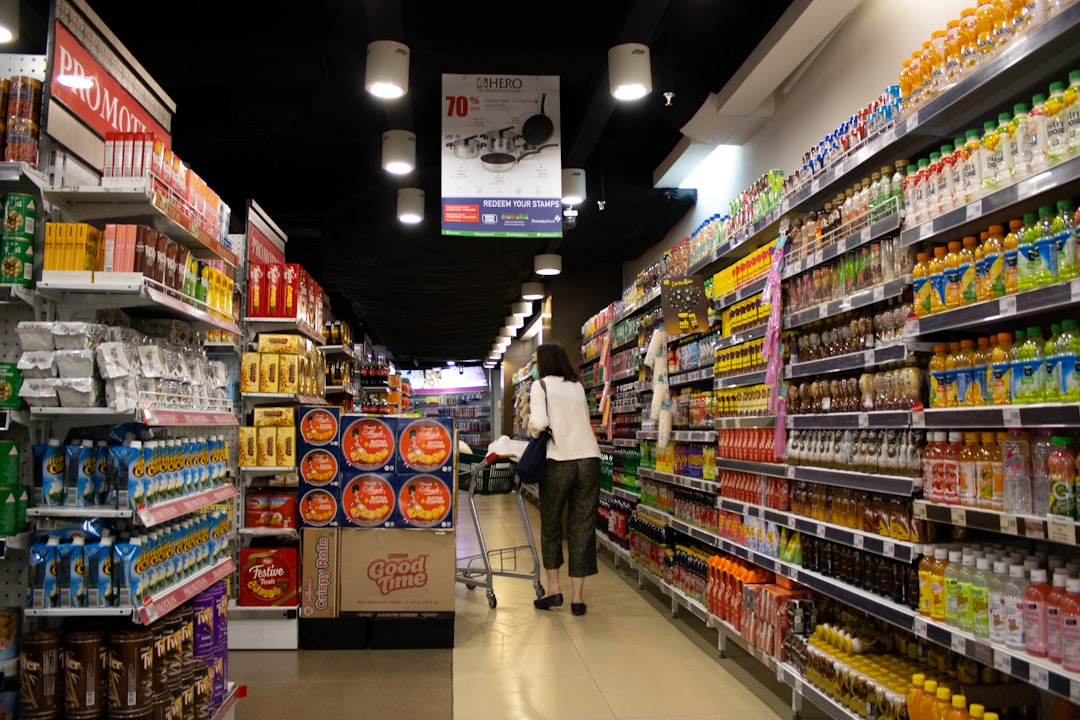

Engage prospects with a scan and streamline customer engagement with FREE QR code marketing tools by Sona – no strings attached!
Create a Free QR CodeFree consultation

No commitment

Engage prospects with a scan and streamline customer engagement with FREE QR code marketing tools by Sona – no strings attached!
Create a Free QR CodeFree consultation

No commitment
Bulk food stores are at the forefront of eco-friendly grocery shopping, catering to cost-conscious and sustainability-minded consumers seeking alternatives to traditional packaged goods. Creating ongoing engagement and delivering value beyond price is a major challenge as shoppers are inundated with choices from both independent stores and large grocery chains. Minimal or absent food packaging, central to a zero-waste ethos, often means customers leave the store with little more than a generic bag, which can eliminate chances for education, loyalty, or follow-up that mainstream retailers create through branded packaging.
Many stores struggle to capture meaningful data about in-store engagement or identify high-value shoppers who are browsing anonymously via Sona’s account identification, making it easy for promising leads to slip away or for personalized offers to remain out of reach. Even loyal customers may walk in, fill a bag, and head out, leaving behind no clue about their preferences or future potential. This anonymity makes it difficult to segment and retarget effectively, and it deprives operators of insight that could guide inventory, merchandising, and promotions.
QR codes emerge as a bridge, connecting physical packaging with digital engagement and actionable insight. Properly implemented, they bring instant access to product origins, allergen guides, preparation tips, and flexible loyalty incentives, while surfacing interaction signals stores can act on. This guide explores how QR code marketing on packaging unlocks new levels of customer engagement, regulatory compliance, and operational intelligence for bulk food stores. Discover best practices for integrating QR codes to drive loyalty, increase conversions, and streamline processes in ways that fit naturally into the bulk shopping experience, empowering your store with actionable, data-backed strategies.

Bulk food stores routinely face the frustration of missed engagement. With no unique identifier on a simple paper bag or reusable container, prospective brand advocates or high-value customers often go unrecognized and untracked. Shoppers seeking essential information like allergy data or sourcing details may give up if it is not easily accessible. That friction can cost sales, depress confidence, and weaken long-term trust in your store’s promise of transparency.
QR codes change the equation by turning every bin label, scooper handle, bag, or take-home jar into an interactive digital touchpoint. Instead of leaving with a plain container, customers leave with a live link to how to use and enjoy what they bought, and your team gains a direct line to understand who engaged, when they engaged, and what they cared about. When integrated with a platform such as Sona QR, codes can be created at scale, updated dynamically as products rotate, and tied to measurable outcomes like loyalty enrollment or recipe shares. Start creating QR codes for free.

Bulk food environments are intentionally minimal. That simplicity can limit how much education or branding a store can fit into the shopping moment. It also obscures visibility into what truly motivates purchases. Without digital touchpoints at the shelf, stores often rely on guesswork to decide which items to feature or which shoppers to re-engage after a visit.
QR codes address these gaps by inserting a lightweight, customer-friendly bridge between physical products and digital experiences. Customers get answers without hunting through websites or asking busy staff. Your team gains attributed data on who scanned what, where, and when. And dynamic codes keep information current without costly reprints if ingredients change or a seasonal product rotates out.
In practice, QR codes convert anonymous interest into measurable engagement. You build a reliable path from a customer’s first look at a bin to their next purchase or subscription, supported by data that helps your team keep what works and fix what does not.
Bulk food stores need formats that align with their most frequent customer interactions: product research, recipe exploration, safety validation, loyalty enrollment, and feedback. Since many items are poured into generic containers, the destination experience matters as much as the code itself. A thoughtful format and landing page can turn a simple scan into a moment of delight that compels action.
Selecting the right type of QR for each use case makes your program easier to manage and more effective. In particular, dynamic web links and forms are the workhorses for this vertical because content and positioning change often, and stores want to collect data that guides remarketing and merchandising.
When to use dynamic vs. static codes:

Even the best-run bulk food stores miss engagement moments because customers tend to move quickly, packaging is minimalist, and staff are often answering hands-on questions. The trick is to place QR codes where intent is already high, then present a clear benefit for scanning. The point of scanning should be self-evident, such as learning whether a product is gluten-free or joining a two-tap rewards program at checkout.
Think about the shopper’s journey from entering the store, exploring bins, and checking out, to using the product at home. QR codes should greet them at each stage with a relevant next step. That omnipresent but unobtrusive structure turns every container into a channel and every engagement into data that fuels better merchandising and marketing.
By aligning placement with intent, you can capture scans when the value is most obvious. That not only increases participation but also ensures your data represents meaningful interest rather than idle curiosity.

Standing out in a price-sensitive market requires more than low unit costs. Bulk stores win when they deliver clarity, confidence, and community. QR codes enable all three through use cases that are easy to deploy and easy for shoppers to understand. Choose a few to start, then expand as staff and customers get comfortable.
Launch use cases where you can measure a clear outcome. That might be a lift in conversions on a hard-to-sell item, an increase in loyalty enrollments, or a higher return rate for seasonal promotions. Tie each use case to a single KPI so you can quickly see what is working.
When these use cases are integrated into a consistent signage system and supported by staff, they create a reliable rhythm of education and conversion that elevates the store experience.
Anonymity is the defining data challenge for bulk food. Many visitors are mission-driven, arrive with their own containers, and leave without any digital trace. QR codes create opt-in moments that identify interest without forcing a heavy signup process. The best practice is to deploy multiple codes across the journey so you can infer intent by context.
Once you begin tagging scans by product category, placement, and time of day, patterns emerge. You will see which customers are discovering new items, which ones are frequent buyers of staples, and which prospects engage with sustainability content. With a platform like Sona QR, these intent data signals can feed segments in your CRM and ad platforms, enabling targeted follow-ups that match real behavior.
By treating every scan as a signal, you begin to shape a living audience graph that fuels efficient, respectful retargeting. The result is less spray-and-pray and more timely relevance.
QR codes work best when they connect all your channels into a single loop. A scan on a bin should lead to a page that encourages a follow-up action like loyalty enrollment, which then triggers email or SMS with relevant content. That email can bring a shopper back for a class, where another code captures feedback and drives a referral. Each step reinforces the next.
Because bulk stores rely heavily on in-store discovery, print collateral, and community outreach, QR codes add measurability to previously opaque channels. You will know which posters, flyers, and take-home cards are pulling their weight and which need to be refreshed. With a central platform like Sona QR, you can manage codes across all these assets and keep performance visible.
The goal is to stop thinking of QR as a one-off link and start treating it as the connective tissue across physical and digital engagement.
Launching a QR program does not require a massive overhaul. It does require clarity about goals, consistent design cues, and a habit of testing and iteration. Start with a single category or promotion so you can refine the playbook before scaling across the store.
Below is a practical rollout sequence tailored to bulk food environments. It prioritizes high-intent touchpoints like bins and checkout while ensuring you capture the data needed to optimize quickly.
Begin by pinpointing business priorities where missed engagement or poor data visibility cause the most friction. Common examples include confusing allergen questions, underperforming seasonal items, and a lack of loyalty signups. Rank these by potential impact and ease of implementation so you can deliver early wins.
Define one primary success metric for the initial campaign. If you are focused on allergens, track reduction in staff questions and increase in scans on relevant bins. If you are focused on loyalty, measure enrollments per 100 transactions. Clarity makes creative choices and analytics setup easier.
Select dynamic codes when you anticipate content changes, want to run A/B tests, or need analytics at the placement level. For instance, a dynamic code on a cinnamon bin can switch the destination from a winter baking guide to a summer fruit pairing guide without any reprinting. This preserves budget and supports continuous improvement.
Use static codes only for truly evergreen destinations that require no tracking. Examples include a permanent page about your store’s mission or a standing page with refill instructions. When in doubt, choose dynamic for flexibility and data.
Ensure every code includes a crisp CTA that communicates the value in plain language. Examples include Scan for allergy and nutrition, Scan for recipes and storage tips, or Scan to join rewards in 20 seconds. Keep CTAs consistent across the store so customers recognize the pattern quickly.
Test scannability on the actual surfaces and under real lighting. Curved jars, textured paper bags, and glossy scoops can affect scan speed. Check performance on both iOS and Android, and validate that the landing pages load quickly and are optimized for mobile.
Roll out in a focused cluster rather than everywhere at once. For example, launch across all grain bins and at the checkout to connect education with enrollment. Add a small shelf-talker or dangler to draw the eye and explain the benefit.
Support deployment with staff coaching. Give simple scripts like Ask me about allergens or Scan here for cooking times so staff can guide hesitant shoppers. Reinforce during team meetings and capture field notes about common questions that might inspire content updates.
Instrument your campaign with UTM parameters and placement IDs so you know which exact code was scanned. Use a dashboard in a platform such as Sona QR to review scan volume by hour and day, conversion rate to your primary goal, and drop-off after landing page load.
Iterate weekly for the first month. If a recipe page drives views but not loyalty signups, add a prominent join button. If signups spike at checkout but not on bags, adjust your container CTA. The goal is continuous tuning until performance stabilizes at a level that justifies scaling.
Bulk food stores have historically struggled to tie in-store materials to downstream behavior. A beautiful sign may inspire interest, but without a clickable action there is no way to attribute outcomes. QR codes solve the action problem, and advanced analytics platforms solve the attribution problem by connecting scans to contacts and purchases.
To turn scans into revenue intelligence, instrument your flow from code to destination to conversion. That means every code should have a unique parameter, every destination should load quickly and pass events to analytics, and every conversion should sync to your CRM or POS. With Sona QR and Sona, stores can link QR scans to known profiles, match scan behavior to purchases, and understand how codes influence repeat visits.
Over time, this discipline builds a clear picture of how education and incentives shape sales. You will be able to demonstrate not only that QR codes generate engagement, but also how that engagement increases loyalty and revenue.
Once your initial QR program is up and running, aim for fewer, stronger placements rather than a flood of codes. Clarity and consistency build trust. Each code should answer a real question or unlock a tangible benefit, and staff should be ready to point customers toward the value.
In addition to design and placement, invest in automation. The more your system can react to scans without manual intervention, the more repeatable and scalable your program becomes. That includes adding UTM parameters automatically, triggering workflows in your CRM, and using segmentation to send the right message at the right time.

Looking to peers for inspiration accelerates your learning curve. The most effective ideas blend store values, shopper curiosity, and simplicity. They also leverage the power of timing by presenting a code exactly when the shopper wonders what to cook, whether an item is safe to eat, or how to get a discount.
Consider which of the following examples fit your brand, then adapt the copy and creative to your tone. Remember to measure every test so you can scale the winners across categories and seasons.
Executed consistently, these ideas deliver measurable gains in satisfaction, repeat traffic, and operational efficiency. They also generate rich content that can be repurposed across email and social channels.
Even strong QR programs can falter if codes are hidden, benefits are vague, or landing pages are slow. The best defense is to keep things obvious and fast. Use clear language, place codes at eye level where possible, and ensure destinations load quickly on mobile with thumb-friendly buttons.
Another common pitfall is overcrowding. A cluttered visual field reduces scanning and can undermine the calm, low-waste atmosphere that bulk shoppers value. Prioritize one clear code per decision point and reserve secondary CTAs for the landing page where there is more room to explain.
Build QR performance into weekly reviews. Share which placements are winning, which messages resonate, and what you will test next. A simple operating cadence keeps the program improving without adding heavy overhead.
Bulk food stores are navigating an environment where data-driven engagement, regulatory requirements, and sustainable operations converge. Against a backdrop of minimal packaging and high consumer expectations, QR codes empower stores to deliver immediate value without compromising a low-waste ethos. They put allergen clarity, sourcing transparency, and culinary inspiration at customers’ fingertips while giving operators the analytics needed to improve inventory, merchandising, and marketing.
When you connect codes to a centralized platform such as Sona QR, every scan becomes both a service to the shopper and a signal for your business. You can manage codes across bins and bags, update content as inventory shifts, sync engagement to your CRM, and attribute results to revenue using Sona. The path forward is simple: start with one or two high-impact use cases, measure outcomes rigorously, and scale the winners across your store. Over time, every offline touchpoint becomes a digital onramp, and every moment of interest becomes a moment of action.
QR codes have transformed bulk food stores from simple point-of-sale locations into interactive, data-driven engagement hubs. By integrating QR codes on packaging, stores can enhance customer experiences, provide instant access to product information, and streamline the buying process—all while gathering valuable insights on shopper behavior. Imagine customers effortlessly scanning to discover nutritional facts, recipes, or sourcing details, turning packaging into a powerful touchpoint that drives loyalty and informed purchasing.
With Sona QR, bulk food stores gain the ability to create dynamic, trackable QR codes that can be updated instantly without reprinting packaging. This means you can adapt campaigns on the fly, measure exactly which products and promotions resonate, and connect every scan directly to revenue growth. No wasted materials, no missed insights—just smarter, more profitable packaging strategies.
Start for free with Sona QR today and transform your bulk food packaging into a seamless, engaging experience that turns every scan into a satisfied, returning customer.
QR codes turn bins, bags, and containers into interactive touchpoints providing instant access to allergen, nutrition, preparation tips, and loyalty programs, enhancing transparency and customer engagement.
QR codes enable offline-to-online connection, real-time content updates, data collection for customer segmentation, personalized follow-ups, and measurable attribution of scan-driven outcomes.
QR codes facilitate instant loyalty enrollment with easy sign-up, reward triggers, referrals, and ongoing engagement through personalized content delivered after scans.
Creative uses include scan-to-give eco pledges, recipe video micro-lessons, referral credits at checkout, seasonal passport challenges, and supplier spotlight storytelling on bins and packaging.
QR codes provide quick access to allergen information, traceability, safety documentation, and regulatory compliance data while supporting a minimal packaging aesthetic.
Use Sona QR's trackable codes to improve customer acquisition and engagement today.
Create Your FREE Trackable QR Code in SecondsJoin results-focused teams combining Sona Platform automation with advanced Google Ads strategies to scale lead generation

Connect your existing CRM

Free Account Enrichment

No setup fees
No commitment required

Free consultation

Get a custom Google Ads roadmap for your business






Launch campaigns that generate qualified leads in 30 days or less.
